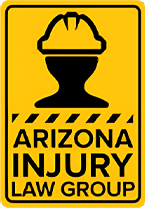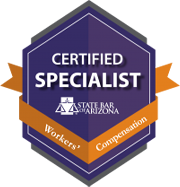What Are Arizona Workers Compensation Rates?

How Rates are Decided
Arizona requires that all businesses carry worker’s compensation insurance to protect workers against job injury expenses. The National Council on Compensation Insurance (NCCI), which covers most states, including Arizona, sets the class rate and experience modification factor (MOD).
The MOD is part of the formulaic multiplier that calculates what the worker’s compensation premium will be, based on its claims history in comparison with other similar companies. This can be a credit (i.e. few claims) or a debit (i.e. excessive claims) and can change what one company may pay versus another company using the same insurance company.
Premium Insurance Rate Payment
The rates are decided on the type of work an employee does, along with the dollars-and-cents rate attached to the employee’s class code, and the MOD. The estimated payment for that insurance is based on which insurance company is used by the employer, the class of the employee’s job, and the financial rate applied per $100 of the payroll for each class-coded job the employer has within its company’s infrastructure.
The Formulaic Calculation (PrimePay.com)
Here is the simple version of how premium payments are calculated, as presented by Prime Pay.
| Payroll (Per $100 of salary) | x | Class Rate | x | MOD | = | Premium Rate |
This gives us the premium payment each time the payroll goes out. Insurance premiums can be paid, per each payroll (pay as you go), rather than making an annual lump sum payment.
An employer, such as a construction company, would logically carry several different job class codes within the company infrastructure, with different insurance rates for each one. Not only are there construction workers as the main body of employees, but also administrative staff and other types of workers in other job classes.
The MOD and Score Impact
If you get a MOD score of 1.0, then you have an average history of claims across similar businesses in your class. If you have a score of less than 1.0, then your score is better than your business peers in your group class. You also pay less which is always a nice outcome.
If your score is more than 1.0, however, then you received more claims than your business peers and it will cost you more in insurance premium rates. Generally, the insurance company does a look-back review of three years to calculate your MOD. So, if you had a bad year four years ago, then your rates will begin to reduce after three years have passed.
When Rates Change
Worker’s compensation insurance providers occasionally file percentage deviations to what the NCCI suggests that a state’s insurance department use as an insurance rates guideline for all insurance agencies and employers. This Arizona Department of Insurance pdf shows which 100 insurance companies filed deviation percentage rates versus the NCCI’s suggested 2018 rates, to cover projected costs of losses in indemnity payments and expenses. This also means higher costs to employers, especially those who may have a higher history of claims.
Get Help Today
Call Immediately For A Free, No Obligation Consultation And Let Us Help You Put Your Life Back On Track. Let Us Help You
Regain Normalcy And Stability Again. We Want To Help You Get The Benefits You Need And Deserve!


